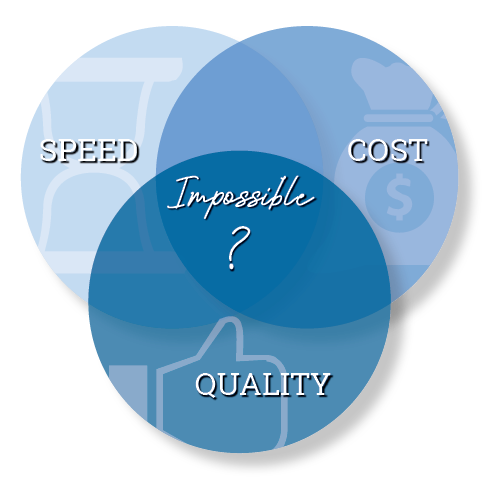It's not all Engineering - How Important is Project Controls to the Engineering Process?

I have had the great privilege of working in Project Management and Project Controls in Canada, the Middle East, South America, and in both the DJ Basin (Colorado) and the Delaware Basin (Texas). My experiences have included engineering firms, industrial construction, and pipeline installation companies as well as with an Oil & Gas operator. One thing I have learned, sometimes the hard way, is that good Project Management requires good Project Controls. One coupled without the other is a potential for poor project execution, cost and schedule overruns, and the development of a project without an understanding of what risks could occur and how best to mitigate them.
During the best of times, the demands to meet schedule deadlines, keep costs low, and maximize quality are hard enough. Throw in a global pandemic and a drawn energy sector and the hill gets steeper. Tightening of financial systems in response to global reductions in demand; a worldwide movement to reduce our carbon footprint; and a workplace reshaped by the response to COVID19 have made paramount the necessity to utilize Project Controls to integrate schedule, cost, and quality on all engineering projects.
However, the age-old question is, can you achieve all three?
Getting the Right Balance - Schedule, Cost & Quality
 The diagram on the right shows a Cost, Speed (Schedule), and Quality relationship. In many textbooks, this image is shown as a triangle with one constraint on each vertex. Depicting with the circles raises the question of whether a project manager can juggle all three and “meet in the middle” or find the correct balance by using an approach that addresses each constraint.
The diagram on the right shows a Cost, Speed (Schedule), and Quality relationship. In many textbooks, this image is shown as a triangle with one constraint on each vertex. Depicting with the circles raises the question of whether a project manager can juggle all three and “meet in the middle” or find the correct balance by using an approach that addresses each constraint.
This concept is known as the Triple Constraints.
The Project Management Institute’s PMBOK (Project Management Body of Knowledge) defines the Triple Constraints as a “framework for evaluating competing demands”. In other words, it clarifies where adjustments need to be made if one or another of the constraints becomes problematic.
It is generally agreed by the PMI and seasoned project managers that you can only get two of the three constraints. The laymen’s version of this was “cheap, fast or good – choose two”. However, at Percheron we strive, much like in other companies, to meet in the middle of the three constraints and not use the triangular mindset of attempting to focus on two main constraints knowing that the third will be sacrificed. We strive to deliver all three and constantly analyze the project with the aim of bettering the project and keeping our clients happy.
This process must start with planning (step 4 in the diagram below) and an understanding of the associated risks and must continue through project execution to project close-out. At that time a final performance assessment of successes and failures will be performed and documented for future projects.

Planning
The key to success on all projects is that there must be clear, concise, and consistent planning of each step, all resources, and knowledge of the stakeholders’ expectations of what success looks like.
In an engineering company, we communicate with our clients to understand the scope of the project. In our preliminary discussions, we try to gain insight into the key motivators that our clients have. In some cases, the project may have a sufficient timeframe, and hence the project team’s focus can be quality and cost since the time exists for these to be firmly developed. The planning step is critical in setting the foundation for successful project delivery.
Risk Mitigation
A key component in project management is performing a risk assessment to understand the potential threats and opportunities that exist in the scope. Having an integrated discussion with all stakeholders and talking through all risks to develop mitigation strategies is fundamental to good project management. It essentially helps “steer the ship” in the right direction. At the commencement of all Percheron engineering projects, a risk analysis is performed to understand the mitigations for all threats which may be encountered.
Getting the Balance
As a Project Manager, we are constantly juggling completing the project on budget, on schedule, and ensuring the quality is maintained while confirming that the design meets the expectations of the client.
 Using the analogy of a ship, the planning phase helps set the expectations of how big a ship should be, how much time we have to build it, how fast it needs to go, and what risks have to be mitigated. Our clients help set the stage for the discussions by setting clear expectations and defining the requirements (the specification and scope). We, as the engineering team, then work through the requirements (specifications) to develop a product that is planned to meet and hopefully exceed the client’s expectations.
Using the analogy of a ship, the planning phase helps set the expectations of how big a ship should be, how much time we have to build it, how fast it needs to go, and what risks have to be mitigated. Our clients help set the stage for the discussions by setting clear expectations and defining the requirements (the specification and scope). We, as the engineering team, then work through the requirements (specifications) to develop a product that is planned to meet and hopefully exceed the client’s expectations.
The risk assessment will identify the risks regarding what materials to utilize, what conditions the ship must be able to weather, and what actions (mitigations) will be made to ensure the work product is of high quality.
The design work begins and as Project Managers, we supervise and lead the process, with an understanding of what the client desires (expectations). The juggling continues and while the standard knowledge is that one constraint must always suffer to serve the other two, we must plan to address each constraint with the expectation of driving towards successful completion of the project.
After the project has been executed, lessons learned need to be documented by discussing the successes and failures, the opportunities captured, and the threats mitigated combined with a deep understanding of the reason for each. This is performed so that these lessons can be integrated into future projects to enhance success.
Project Controls set the stage for the successful planning, execution, and closeout of projects. Project Controls is far more than simply managing cost and schedule but rather a mindset centered around effective planning, communication, risk assessment, and ongoing analysis to ensure the client’s expectations will be met. Robust planning must be undertaken prior to the commencement of any work as well as regular, ongoing, and active management of the project. An engineering project may produce engineering designs but without robust, integrated, and active Project Controls systems and presence there is a very high chance that not one, but all constraints will suffer, and the project will fail.
If you think you need help to manage a project more effectively by managing schedules, costs, and risk, please reach out to Liam O’Toole, Engineering Project Manager liam.otoole@percheronllc.com.

.png?width=750&height=375&name=Percheron-(LARGE).png)

